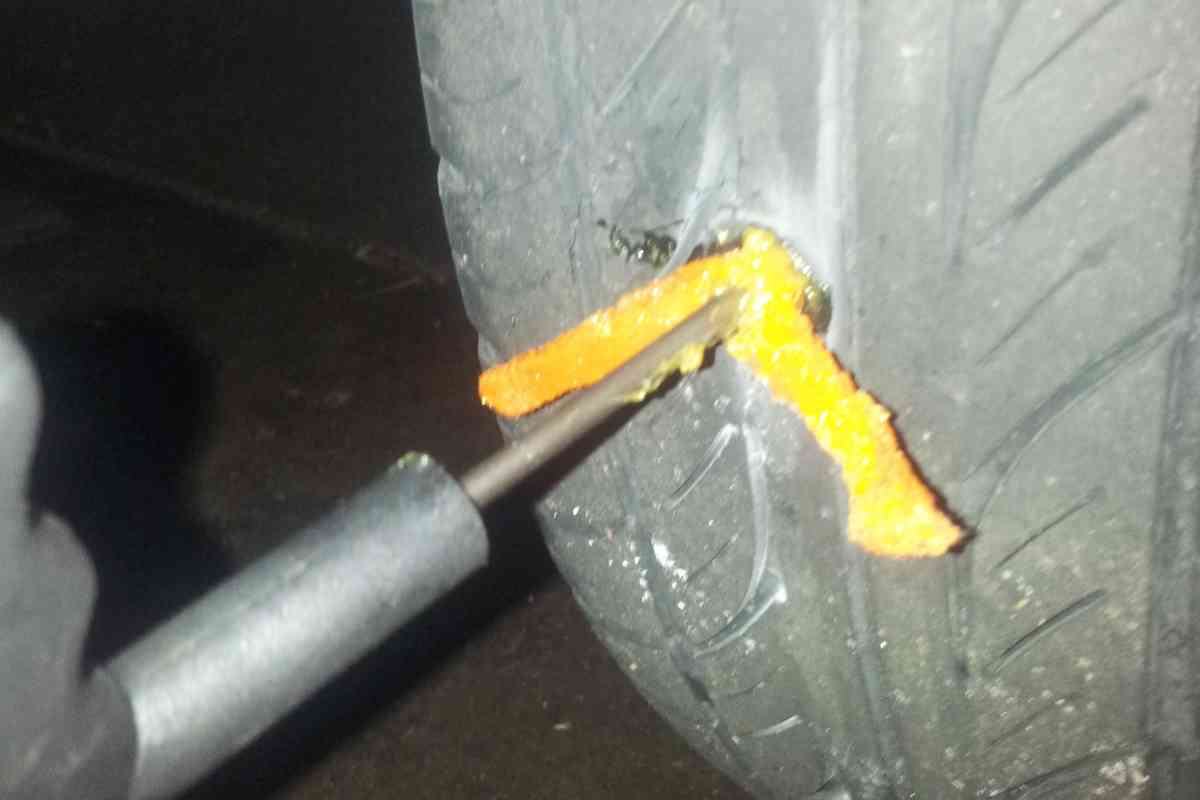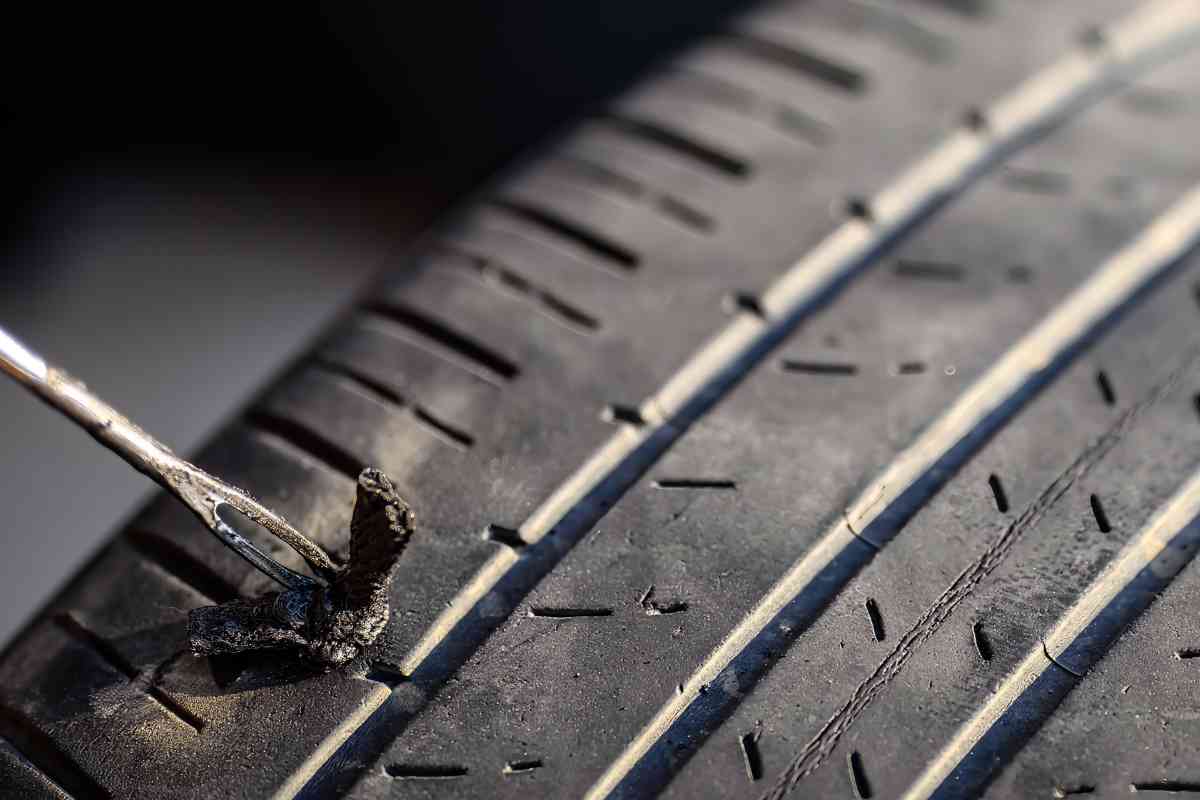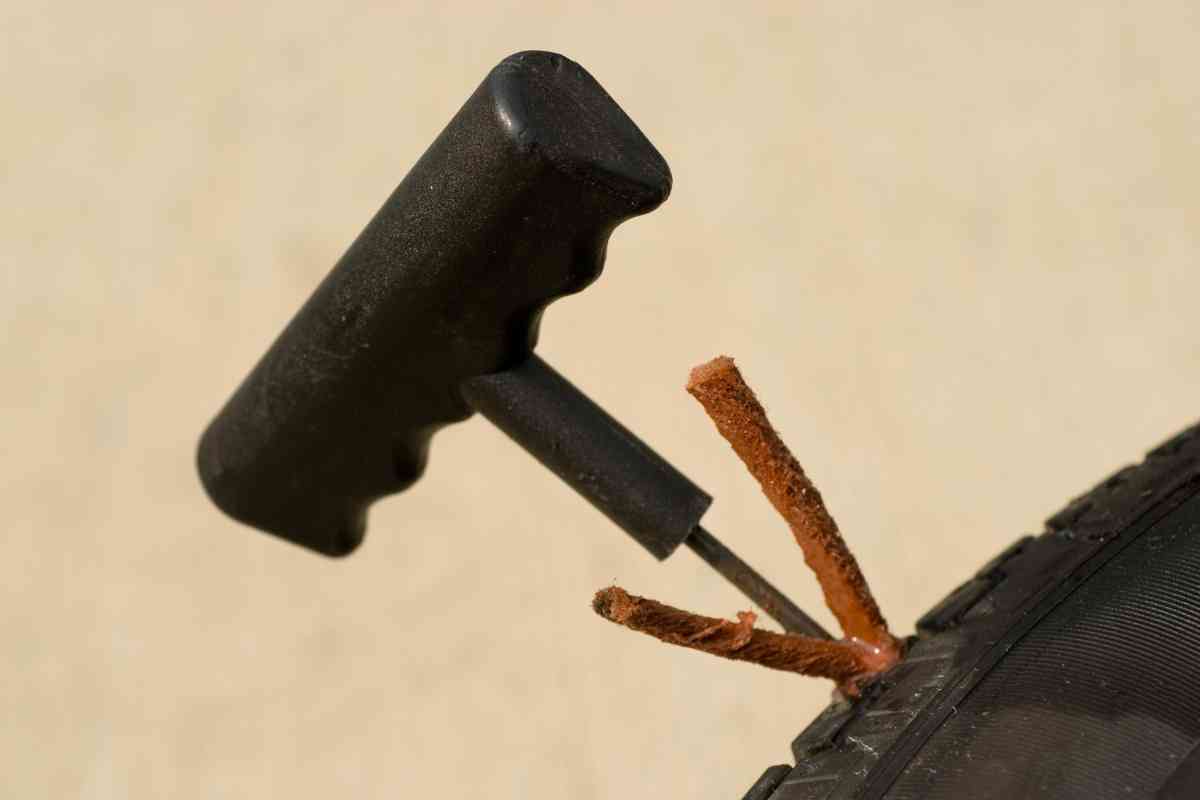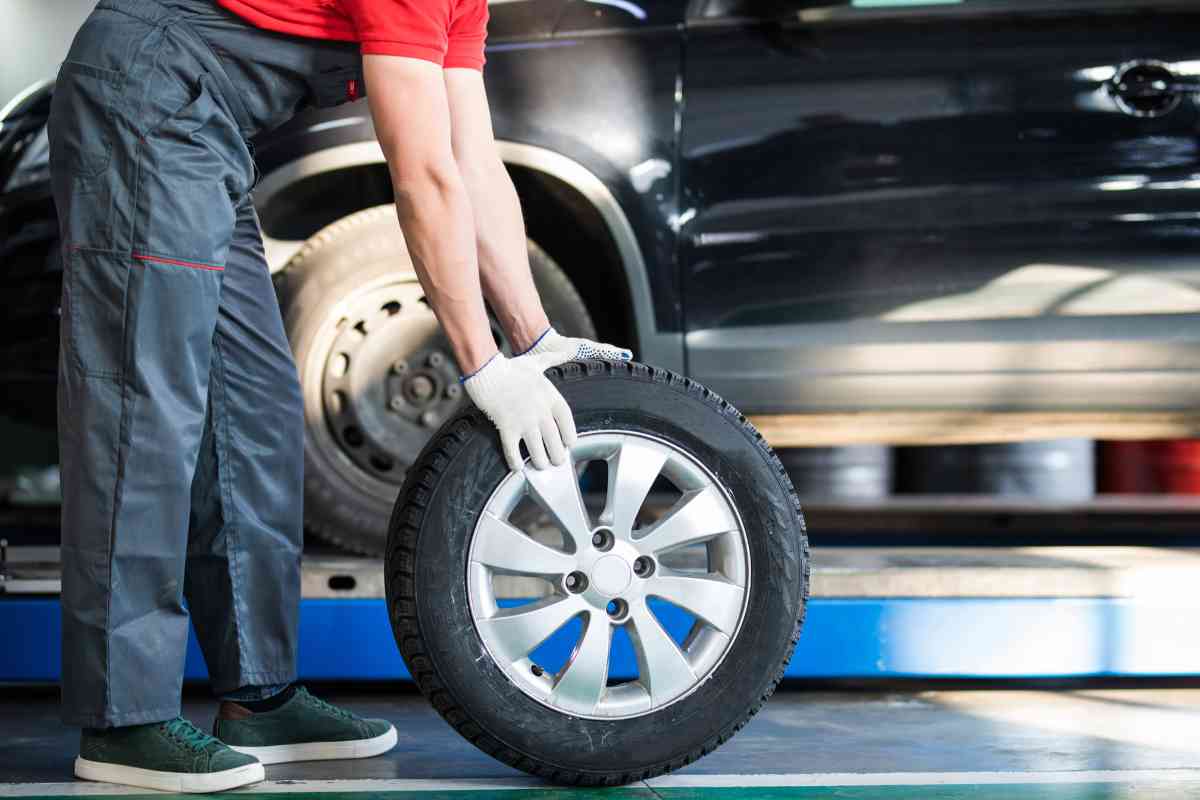How Much Does It Cost to Get Your Tire Plugged: Price Factors and Estimates
Have you ever been on the road and suddenly felt your car pull to one side? That sinking feeling could mean you’ve got a flat tire. A common issue for many drivers, flat tires can be both inconvenient and a safety hazard. But don’t worry; tire plugging might just be the quick and cost-effective solution you need.

Related Post! How Long Do Patched Tires Last?
How Much Does It Cost To Plug A Tire?
The cost of plugging a tire generally ranges from $10 to $20. This price can vary based on factors such as your location, the repair’s complexity, and the choice of service provider. While tire plugging is an affordable solution for punctured tires, additional services might increase the overall cost.
Experiencing a flat tire can disrupt your day and raise safety concerns. Tire plugging is a widely used method to repair punctures, potentially saving you the expense of a new purchase. Generally, the cost to get your tire plugged ranges from $10 to $20, varying based on location, repair complexity, and the service provider.
Key Takeaways
- Tire plugging is an economical solution for punctured tires, typically costing $10-$20.
- The feasibility of a tire plug depends on the puncture’s size and location.
- Professional repair is advised over DIY to ensure proper repair.
When to Choose Tire Plugging
Opting for a tire plug is often an ideal short-term fix. However, it’s crucial to assess the puncture’s size and location. Large punctures, especially those on the tire’s sidewall, might require more extensive repairs or even a complete tire replacement.
Your tire repair costs can be influenced by factors like tire type and choosing between DIY kits or professional repair shops.
Understanding Tire Repair Options
Knowing your options for tire repair is crucial for safety and tire longevity.
Types of Tire Damage
- Puncture Damage: Often caused by nails or screws, most punctures are repairable if they’re not larger than 1/4 inch in diameter.
- Sidewall Damage: This crucial area, if damaged, usually means the tire can’t be safely repaired and might need replacement.
- Tread Wear: Excessive or uneven wear might indicate alignment issues or the need for tire rotation and can be irreparable.
- Tire Age: Tires naturally degrade over time, showing signs like cracking or dry rot.
Tire Repair Procedures
- Inspection: Look for visible punctures or damage and check the tread depth.
- Tire Plug: A quick fix for tread punctures using a sticky, tar-like material.
- Tire Patch: More secure than plugs, patches adhere to the inside of the tire.
- Plug and Patch Combination: The most reliable repair, sealing the puncture completely.
- Replacement: Necessary if the sidewall is damaged or the tire is worn out.

Repair Method and Suitability
- Tire Plug: Suitable for small tread punctures; a temporary fix.
- Tire Patch: For larger tread punctures; lasts longer than plugs.
- Plug and Patch: Best for durable tread puncture repairs.
- Replacement: Required for sidewall damage or worn tires; as good as a new tire.
Remember, some tire damage isn’t visible externally. An internal inspection by a professional is vital to determine the right repair method.
Repair costs vary, with a tire plug typically being the most budget-friendly and full replacement the costliest, depending on your tire’s size and type.
Cost Factors for Tire Plugging
When you face the common but frustrating issue of a tire puncture, understanding the costs involved is crucial. The price to plug a tire can vary, influenced by tire repair service fees and potential additional tire services.
Tire Repair Service Fees
The labor costs for tire repair typically include assessing the damage, removing the object causing the puncture, and the actual plugging or patching. These prices can differ based on your location and the type of establishment – dealerships may have higher rates compared to independent auto repair shops. On average:
- Standard tire patch cost: $15 – $30
Additional Tire Services

Post-repair, other services might be recommended to ensure your vehicle’s safety and tire longevity. These include:
- Tire rotation: Essential for promoting even tread area wear.
- Tire balancing: Key for a smooth ride; often done alongside rotation.
- Tire replacement: Necessary if the damage is beyond a simple plug.
Here’s a summary of potential additional costs:
| Service | Average Cost |
|---|---|
| Tire Rotation | $20 – $50 |
| Tire Balancing | $15 – $40 per tire |
| Tire Replacement | $100 – $300 per tire |
Remember, while plugging a tire is cost-effective for flat tire repair, the total price can increase if additional services are needed.
DIY Versus Professional Tire Repair
Knowing when to opt for a DIY tire repair kit or professional repair is crucial for both cost-efficiency and safety.
Evaluating DIY Tire Repair Kits
DIY kits are suited for small punctures in the tire’s tread. They can be economical if the puncture is less than 1/4 inch in diameter. Kits generally include a tire plug, adhesive, and insertion tools. However, DIY repairs require:
- Checking the tire’s tread depth, which should be more than 2/32 of an inch.
- Following instructions closely for a secure plug.
- Matching the tire type and size with the kit’s specifications.
| Tire Size | DIY Kit Compatibility | Suggested Kit |
|---|---|---|
| Standard Cars | Usually compatible | Basic plug kits |
| Larger Trucks | May need specialized kits | Heavy-duty kits |
| Motorcycles | Specific kits required | Compact motorcycle kits |
DIY kits aren’t suitable for sidewall punctures, large holes, or worn tires.

When to Seek Professional Repair
Professional repair at auto shops or tire services is advisable for:
- Punctures in the sidewall or near the tire’s shoulder.
- Significant tread wear or uneven patterns.
- Multiple punctures or large damage beyond DIY kit capabilities.
Professionals have the tools and expertise to assess tire damage accurately and can advise on the best course of action, ensuring your vehicle’s safety and longevity.
Preventive Measures and Best Practices
Maintaining proper tire pressure and consistent monitoring are key to minimizing the need for tire plugging. Regular checks not only help in preventing leaks but also contribute significantly to extending the life of your tires, ensuring a safer driving experience.
Regular Tire Maintenance
Tire Rotations
To evenly distribute wear and prevent damage, it’s essential to rotate your tires every 5,000 to 8,000 miles. This routine maintenance can significantly reduce the risk of leaks and tire wear.
Keeping a Spare Tire
Always have a well-maintained spare tire in your vehicle. It’s a simple yet effective way to avoid the inconvenience of being stranded due to a damaged tire.
Regular Inspections
Regularly check your tires for signs of wear and tear. Early detection of potential issues can save you from more extensive repairs down the line.
Prompt Repairs
If you notice any abnormalities, don’t hesitate to visit a tire service or mechanic. Addressing issues immediately can prevent further damage and maintain the integrity of your tires.
Understanding Tire Pressure Monitoring
The TPMS Light: Modern vehicles are equipped with a Tire Pressure Monitoring System (TPMS), which alerts you via a dashboard light when your tire pressure is low.
- Heeding the TPMS Warning: If the TPMS light illuminates, promptly check your tire pressure.
- Maintaining Correct Pressure: Always refer to your vehicle’s manual for the recommended tire pressure and adjust as needed.
- Seeking Professional Help: If you’re unsure about addressing a TPMS warning, don’t hesitate to seek assistance from roadside help or a professional tire service.
Best Practices for Tire Care

- Regular Tire Checks: Early identification of tire issues can prevent more significant problems.
- Monitoring TPMS Light: Driving with underinflated tires can be dangerous. The TPMS light is a crucial indicator to help you avoid this risk.
By adhering to these maintenance practices, you not only reduce the likelihood of needing tire plugging but also ensure a safer, more efficient, and cost-effective driving experience.
Remember, various factors like road hazards, nail punctures, and the condition of your tire’s bead and valve stem play a significant role in tire health. Regular attention to these aspects, along with the use of tools like tire sealant in emergencies, can greatly enhance your vehicle’s performance and safety.
